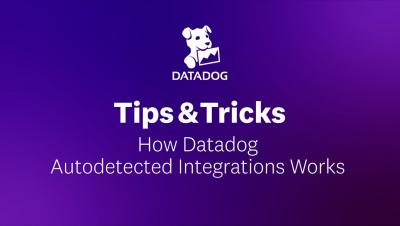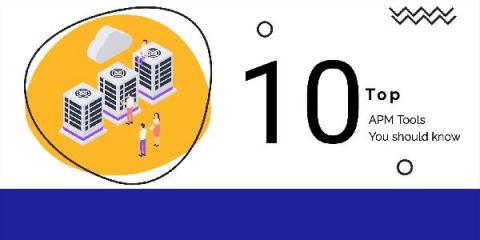Operations | Monitoring | ITSM | DevOps | Cloud
APM
The latest News and Information on Application Performance Monitoring and related technologies.
Application Performance Monitoring
An application is not just a small part of any business. It would be wise enough to say that an application itself is a company’s business in today’s digital world. This is the reason why application performance monitoring problems are the biggest hurdle for IT Teams and the growth of any business. Customer expectations from the application’s performance are changing every day. Today, customers don’t have patience and want to use any application flawlessly.
MyLife Digital: Cultivating DevOps culture in a hybrid environment with Datadog
How Datadog Autodetected Integrations Works | Datadog Tips & Tricks
Why Is APM Important? Breaking Down the Benefits
New to application peformance management (APM)? Read a quick primer on how it works and why it's become a business necessity.
SQL Server Performance Monitoring: Top Metrics to Look At
Top 10 Metrics to Track when Monitoring Microsoft IIS Performance
Microsoft Internet Information Services (IIS, formerly known as Internet Information Server) is an extensible web server software created by Microsoft for use with the Windows family. IIS supports various protocols, including HTTP, HTTP/2, HTTPS, FTP, FTPS, SMTP, and NNTP. According to the most recent ranking by W3Techs, Microsoft IIS is the second most popular web server technology behind Apache.
Top 10 APM Tools in 2021 As Per G2 Ratings
In this information technology era, Application Performance Management (APM) monitors the performance of software applications and identifies the problems related to application performance as a service to the users. APM can be monitored or tracked using categories like load time, the response time of the application, etc. Nowadays, the applications are becoming more and more complex and distributed by using some technology in it.
How to map custom boundaries in Kibana with reverse geocoding
Want to create a map of where your users are? With the GeoIP processor, you can easily attach the location of your users to your user metrics. Right out of the box, Kibana can map this traffic immediately by country or country subdivision: Plus, the new User Experience app for Elastic APM automatically creates maps based on monitoring data: But what if you want to take this one step further and create maps with different regions?










